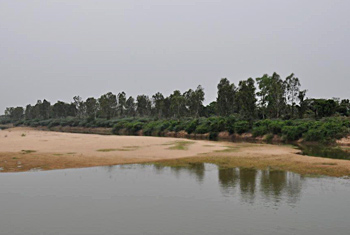 Idangai Uprising was the revolt of the Valangai and Idangai communities against the Brahmin and Vellala landlords and also the South Indian government. The Brahmins, with the help of the officers of the crown and the Vanniyas, wrought untold injustice on the people of ninety-six castes of the Idangai group, i.e., castes who were engaged in agriculture by contributing their labour. Thus, the outcome of all these was the uprising. In a mass meeting of the ninety-six castes it was decided that they would not pay any taxes levied on them by the Sabha and the King`s officers.
Idangai Uprising was the revolt of the Valangai and Idangai communities against the Brahmin and Vellala landlords and also the South Indian government. The Brahmins, with the help of the officers of the crown and the Vanniyas, wrought untold injustice on the people of ninety-six castes of the Idangai group, i.e., castes who were engaged in agriculture by contributing their labour. Thus, the outcome of all these was the uprising. In a mass meeting of the ninety-six castes it was decided that they would not pay any taxes levied on them by the Sabha and the King`s officers.
Cause of Idangai Uprising
It is known from inscriptions dating to the Vijayanagara period that the system of Valudilampattu-Uchavadi was followed by the Idangai and Valangai communities for the purpose of paying taxes to the government. Since the commencement of Kannadiga rule (of the Vijayanagar dynasty), their territory became the possession of the Jivitakkarar and they were unjustly taxed and the land unjustly leased. It was resolved that in that Nadu land such as Iraiyilipparpi (tax-free land), Pandaravadai and Jivitapparru should not be given as Adaippu-Nibatti Kuttagai or Servai. The rates and the way in which the taxes should be paid were also stipulated. The Idangai and Valangai groups decided not to submit to the oppression and resolved to defend the rights they had been enjoying. Thus the main cause for the uprising was unjust tax collection by government officers and official tenure holders, secondly, misappropriation of the Kani land by the same people, and finally, coercion of the Uravar by officials to cultivate the latter`s land.
Composition of Valangai and Idangai groups
The Valangai and Idangai groups comprised cultivators, artisans, merchants, etc. and it has also been clarified that these Jatis usually belonged to the lower section of the caste hierarchy. Brahmins seem to have stood aloof from these divisions in most cases, though the position of Vellalas seems to have been vaguer. There is some possibility of the lower section of the Vellala community being included among them. The names of jatis or professional groups known from the Korukkai and Tiruvaigavur inscriptions as probably being included in the Valangai and Idangai groups are as follow:
Settigal (merchants); Kaikkolar (weavers); Senaikkadaiyar (merchants); Saligar (weavers); Niyayattar (weavers); Seniya (weavers); Manradi/Idaiturai (herders); Koyilangadigal (merchants); Stvanpadavar (merchants); Vaniyar (merchants); Sekku-vaniyar (oil merchants); Kanmalar: Kollan (blacksmiths), Tachchan (carpenters), Tattan (goldsmiths); Vannattar (kannakkan); Kusavan (potters); Navitan (barbers); Vannan (washermen); Kavalkaran (watchmen); Kavvinai-Paraiyar (craftsmen); Sarvakkarar (soldiers) and Ilampunjai (toddy tappers).
From the above, therefore, we may say that the Valangai and Idangai groups mostly belong to the lower sections of the caste hierarchy except the Sekku-Vaniyar and can be defined socio-economically as the direct producers of agricultural and other products and the people who provided services to others.
The cultivators, artisans and others who organized themselves into the Valangai and Idangai groups rose in an open revolt in the Valudilampattu area which comprised parts of the present South Arcot and Tiruchirapalli District. Within a year, this revolt had spread to the adjacent areas between the Kollidam River and Kaveri River and developed into a movement aimed at a tangible goal, namely, the settlement of taxes in their favour, involving people of the upper sections of society also.
Though it seems that the condition of the people did not improve as a result of this revolt and its subsequent development into a wider movement, nevertheless we do not hear of any more incidents of this type after the Kugaiyur inscriptions in 1482. The movement seems to have subsided with the establishment of Nayaka rule in these regions.



















